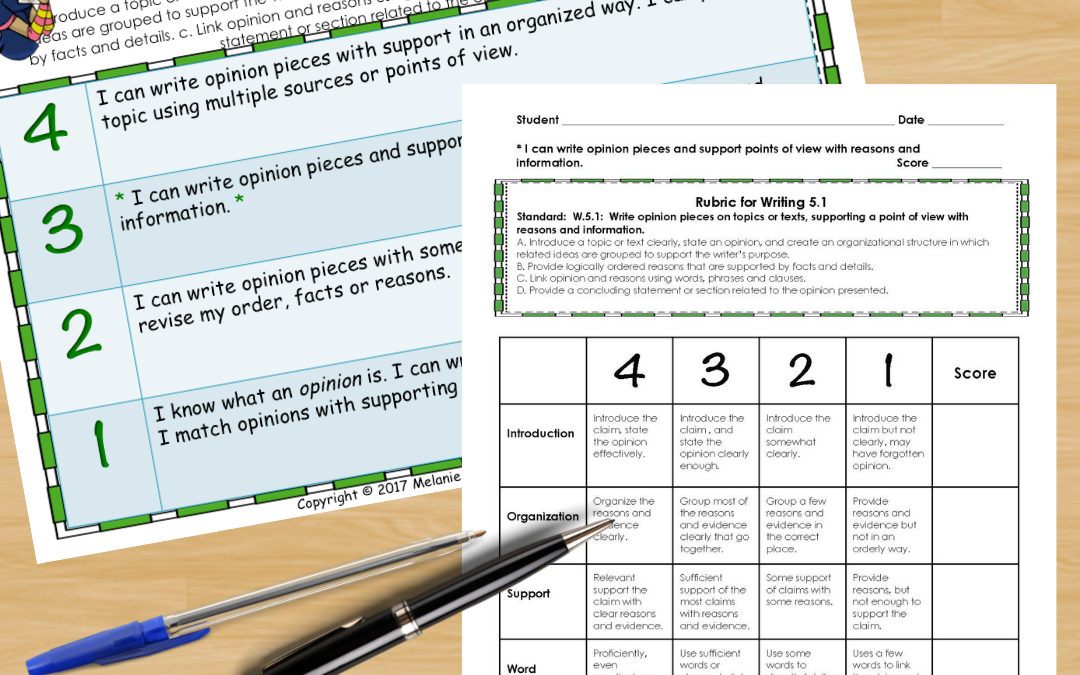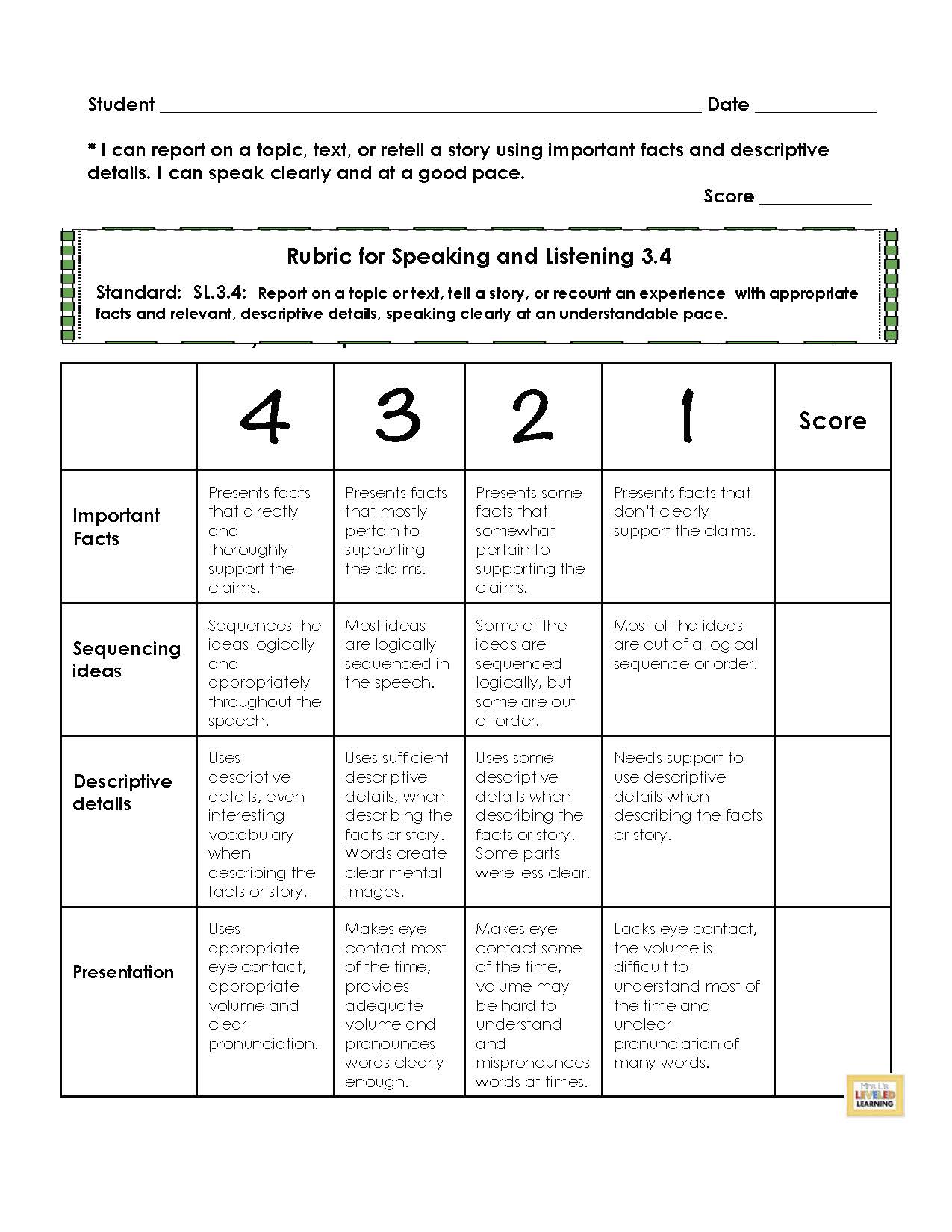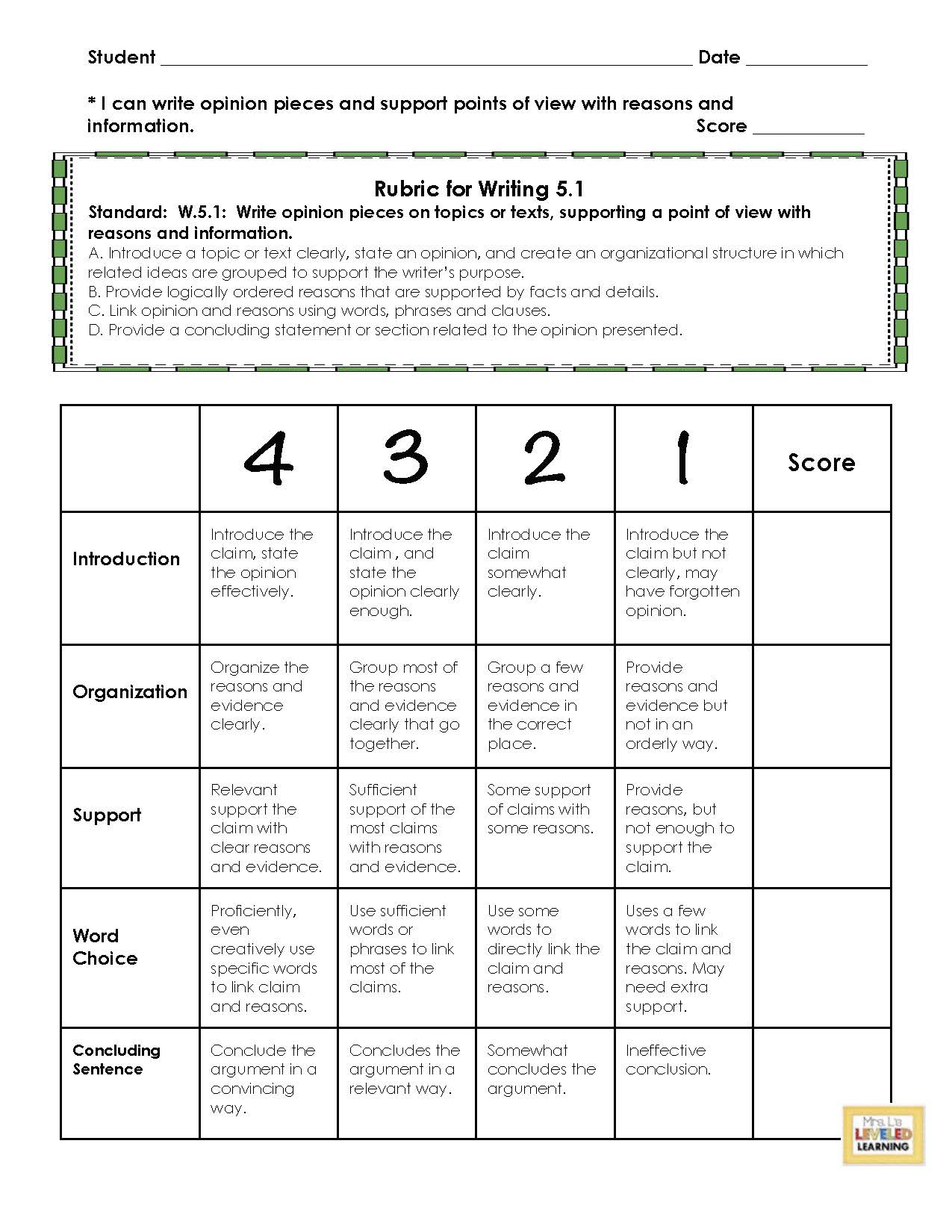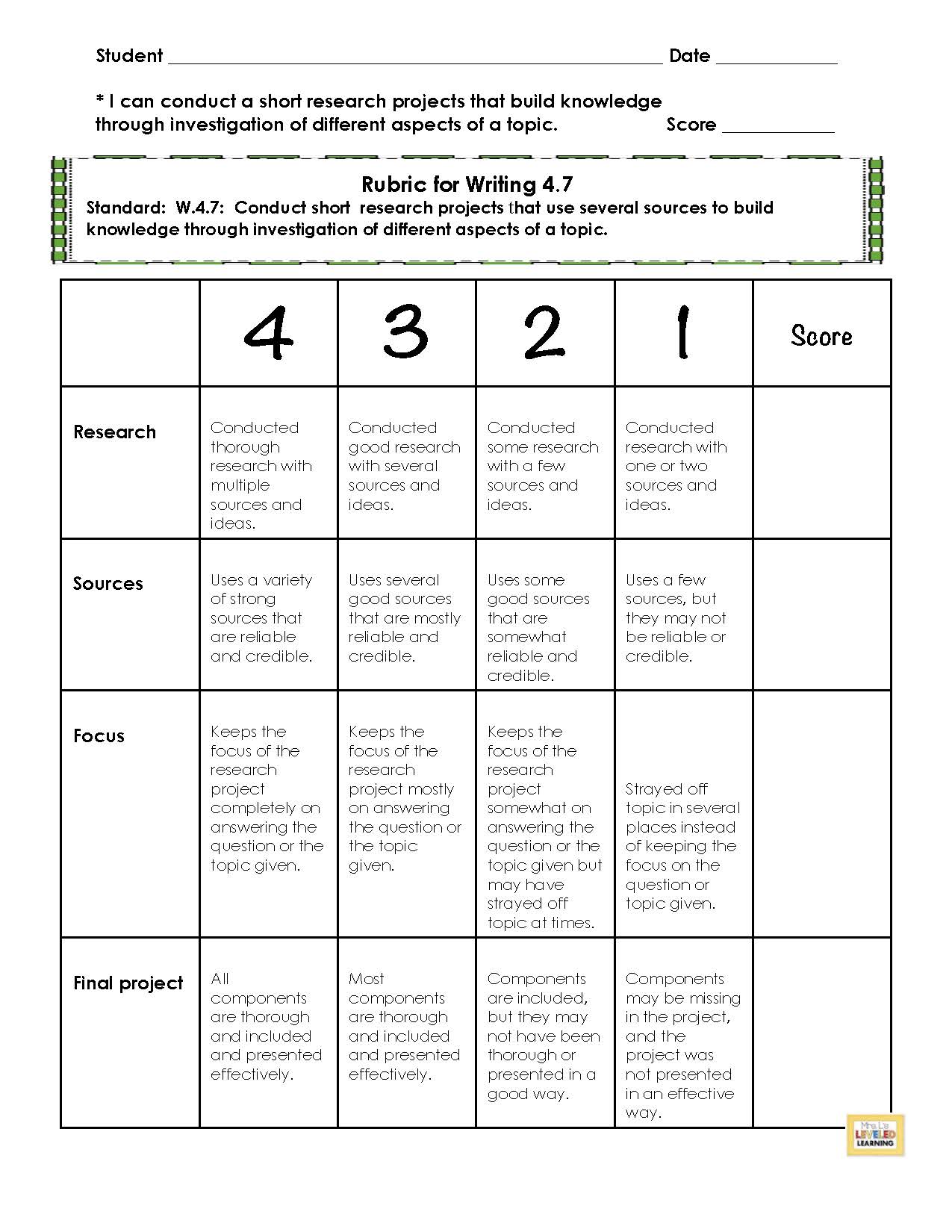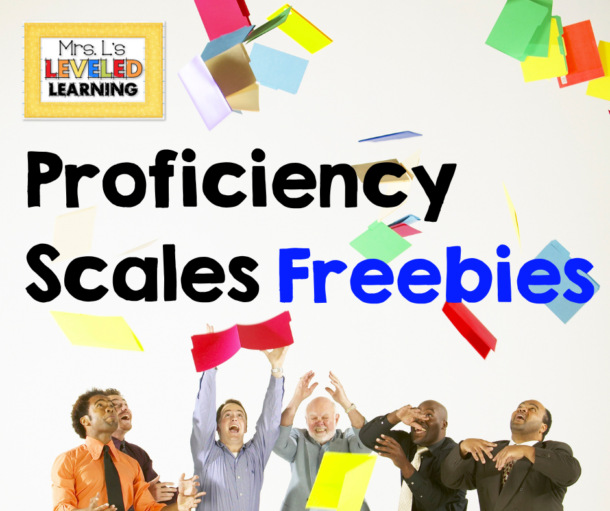What’s the difference between a Rubric and a Proficiency Scale? In the examples below I’m going to share with you how each classroom tool can vary in structure and purpose. A rubric can look like a four-point scale with one crucial difference; a proficiency scale is focused on one learning objective. A rubric often includes a variety of skills that are related to different standards. Let’s look at some examples for elementary and middle school language arts and writing!
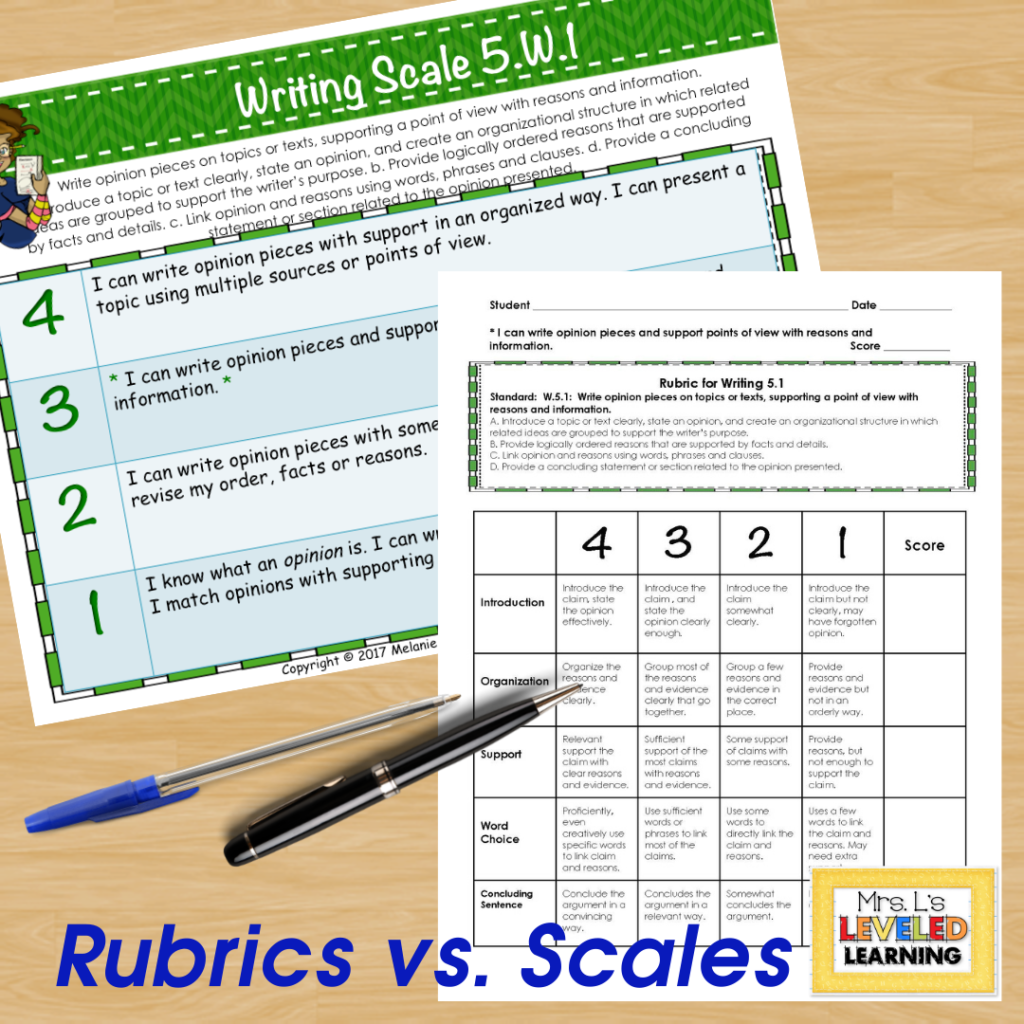
What is a Proficiency Scale?
A proficiency scale focuses on one learning standard. The learning goal may be broken down into four or five levels of difficulty. The four levels of this scale define degrees of mastery. They should be very specific in describing the degrees of mastery for a learning goal. These levels always start with the simplest demonstration of the concept, at level 1. It may include sub standards related to the same skill, or background knowledge from previous grade levels. As each level of difficulty increases students get closer and closer to achieving mastery at grade level. Proficiency scales often have at least one advanced level for students above grade level. In the scales below the content in levels one and two are either simple subskills of this grade level standard, or prior knowledge from earlier grades. the statements at Level 3 indicate the grade level expectation. Level 4 provides an opportunity for students to demonstrate advanced learning related to the same standard. Sometimes this highest level will be required for high achieving or gifted students.
How is a Proficiency Scale used?
Proficiency scales often help teachers to pre-assess their students, and plan instruction. differentiation becomes easier when levels of proficiency are already defined. A proficiency scale used to create post assessments and assign grades. The most unique aspect of a proficiency scale is that it create separate milestones to document progress. They can be excellent visual guides of achievement. Students are able to participate in their own assessment when they’re able to identify their place on a scale, and what they need to work on next.
How do I grade student performance with a Proficiency Scale?
Some grading systems use a four-point scale and others are converted to a traditional percentage or letter grade. You can learn more about converting grades by following this link. Usually a student’s grade in a learning scale is one of many including pre-assessments, classroom practice, and post assessments we related to the same standard or standard cluster. if a student ends up at Level 3 by the end of the learning unit, that ‘3’ represents all the work they have put into that standard. Students should always have multiple opportunities to demonstrate mastery of a learning objective. This is key to using proficiency scales effectively. They work their magic when students and teachers, parents and administrators, can clearly see progress In each standard!
What is a Rubric?
A rubric it’s often used to grade a project a presentation or some kind of learning product. It outlines the specific criteria for producing a learning product or presentation. The learning product or presentation will usually have several aspects that contribute to a student grade. each aspect is briefly described according to the general continuum. The aspects are not always related to the same learning goal or topic. In an oral presentation for instance, you might assess whether a student’s ideas were relevant to their topic, as well as whether their presentation was visually appealing, as well as the tone or quality of their voice. These three things are completely separate skills. They would not be taught at the same time but in many different mini lessons. Here are some examples of rubrics below. Can you see how each criteria for the project is assessed separately, on a continuum of quality?
https://www.teacherspayteachers.com/Store/Mrs-Ls-Leveled-Learning/Search:rubric
How is a Rubric used?
A rubric does not necessarily include the directions to produce a learning product. It does describe how it will be assessed. Rubrics often employ a general qualitative continuum such as “rarely”, “sometimes”, “mostly”, and “always”. the different criteria of the learning product or presentation is graded separately according to the continuum.
How do I grade student performance with a Rubric?
The points for each section are usually added together and taken as a percentage grade. Rubrics will show you a level of quality for each aspect that’s being examined, but it will not show you whether or not this student made any progress in each category. A rubric is a snapshot of performance at one moment, on one assignment. The grade taken from a rubric usually counts as one grade for one project.
I would love to hear what you are using in your classroom! Leave a comment below to share!
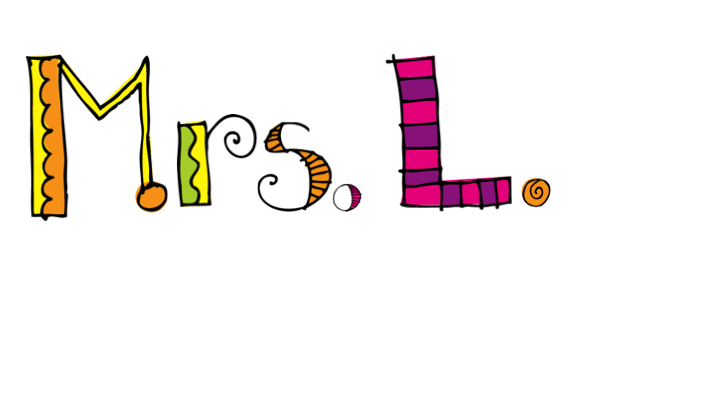
Thank you to Julie M. for reviewing these resources. I’m so glad this is helping your team to plan and assess!
4th Grade ELA Assessment Rubrics for Writing, Language, and Speaking & Listening
“My entire team ended up getting this to use for our 4th grade PLC. We are working on adapting our learning progressions with this resource.” – September 2020

Find ELA Rubrics for Grade Levels 3-6 here.
(The 6th grade rubrics can be adapted for 7th and 8th grades because the standards are very similar!)

